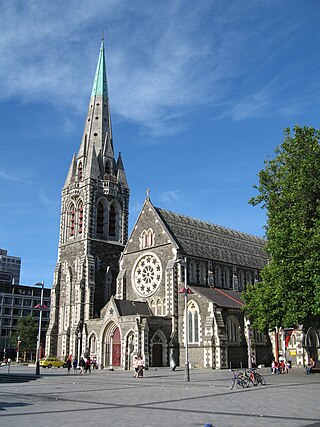
ChristChurch Cathedral, also called Christ Church Cathedral and (rarely) Cathedral Church of Christ, is a deconsecrated Anglican cathedral in the city of Christchurch, New Zealand. It was built between 1864 and 1904 in the centre of the city, surrounded by Cathedral Square. It became the cathedral seat of the Bishop of Christchurch, who is in the New Zealand tikanga of the Anglican Church in Aotearoa, New Zealand and Polynesia.
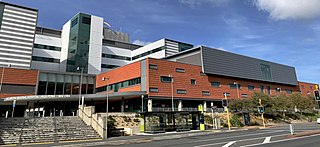
Wellington Hospital, also known as Wellington Regional Hospital, is the main hospital in Wellington, New Zealand, located south of the city centre in the suburb of Newtown. It is the main hospital run by Te Whatu Ora, Capital, Coast and Hutt Valley.

Middlesex Hospital was a teaching hospital located in the Fitzrovia area of London, England. First opened as the Middlesex Infirmary in 1745 on Windmill Street, it was moved in 1757 to Mortimer Street where it remained until it was finally closed in 2005. Its staff and services were transferred to various sites within the University College London Hospitals NHS Trust. The Middlesex Hospital Medical School, with a history dating back to 1746, merged with the medical school of University College London in 1987.

Christchurch Hospital is the largest tertiary hospital in the South Island of New Zealand. The public hospital is in the centre of Christchurch city, on the edge of Hagley Park, and serves the wider Canterbury region. The Canterbury District Health Board (CDHB) operates the hospital with funding from the government.

The Durham Street Methodist Church was a former heritage-listed Methodist church located in Christchurch, New Zealand. Built in 1864 in the Gothic Revival style, it was, prior to its destruction, the earliest stone church constructed in the Canterbury region.

Holy Trinity Avonside was a heritage-listed Anglican church located in Linwood, Christchurch, New Zealand. It was registered as a "Historic Place – Category I" by the New Zealand Historic Places Trust. The church building was "damaged beyond the point of repair" in the February 2011 Christchurch earthquake and was demolished the following September.

William Thomas Trethewey was a sculptor and monumental mason from Christchurch, New Zealand. His best known work is the Citizens' War Memorial in Cathedral Square, Christchurch, where the city's annual Anzac Day service is held.
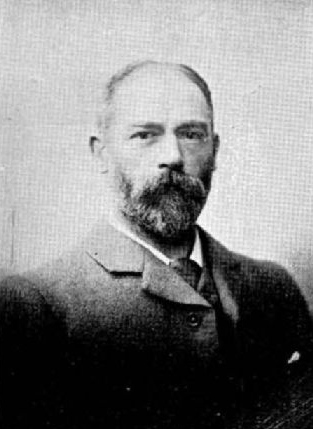
Armson, Collins and Harman was an architectural firm in New Zealand. It was founded by William Barnett Armson (1832/3–1883), and after his death, became the practice of two architects who articled with him, John James Collins (1855–1933) and Richard Dacre Harman (1859–1927).
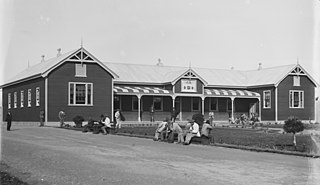
The Seaview Asylum was a psychiatric hospital located to the north of Hokitika, in the West Coast Region of New Zealand's South Island, adjacent to the former Westland Hospital. Open from 1872 to 2009, Seaview trained psychiatric nurses and was once the town's biggest employer.

Cecil Walter Wood was a New Zealand architect. He was the dominant architect in Canterbury during the interwar period.
Mabel Thurston, was a notable New Zealand nurse, hospital matron and army nursing administrator.
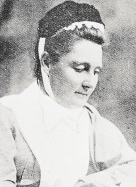
Sibylla Emily Maude, known as Nurse Maude, was the founder of district nursing in New Zealand. She was loved for her selfless work for the poor, walking many miles each day in every kind of weather to treat those who could afford no medical help.
Hanorah Philomena FitzGibbon MBE was a New Zealand civilian and military nurse, hospital matron and nursing administrator.
Eileen Marjorie Fosbery Chambers was a New Zealand nurse, hospital matron, nursing tutor and administrator. She was born in Sydney, New South Wales, Australia on 29 May 1906.
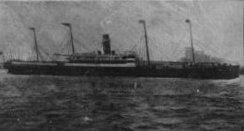
SS Marquette was a British troopship of 7,057 tons which was torpedoed and sunk in the Aegean Sea 36 nautical miles (67 km) south of Salonica, Greece on 23 October 1915 by SM U-35, with the loss of 167 lives.
Edith Mary Rudd was a New Zealand civilian and military nurse. She served in both World War I and World War II, and received the Florence Nightingale Medal from the Red Cross in 1961.

Helena Kathleen Isdell was a New Zealand nurse who served in the First World War and died in the sinking of SS Marquette in 1915.
Muriel Grace Widdowson was a New Zealand nurse. She was the superintendent of various hospitals in North Canterbury from 1935 until her retirement in 1952. A year before her retirement, Widdowson was named an Officer of the Order of the British Empire at the 1951 New Year Honours,

Queen Mary Hospital, in Hanmer Springs, New Zealand is a former residential alcohol and drug treatment hospital. It opened in 1916 to treat returned servicemen from World War I, on the site of a sanatorium built in 1879. From the 1920s to 1960s it treated mental health conditions generally but in the 1970s it became the national specialist addiction and alcohol treatment centre. The hospital closed in November 2003. The Queen Mary Hospital (Former) and Hanmer Springs Thermal Reserve Historic Area was designated as a historic site by Heritage New Zealand in 2004. Within that area three buildings, the Soldiers' Block, Nurses' Home and Chisholm Block, were given Category I protection by Heritage New Zealand in 2005.
















